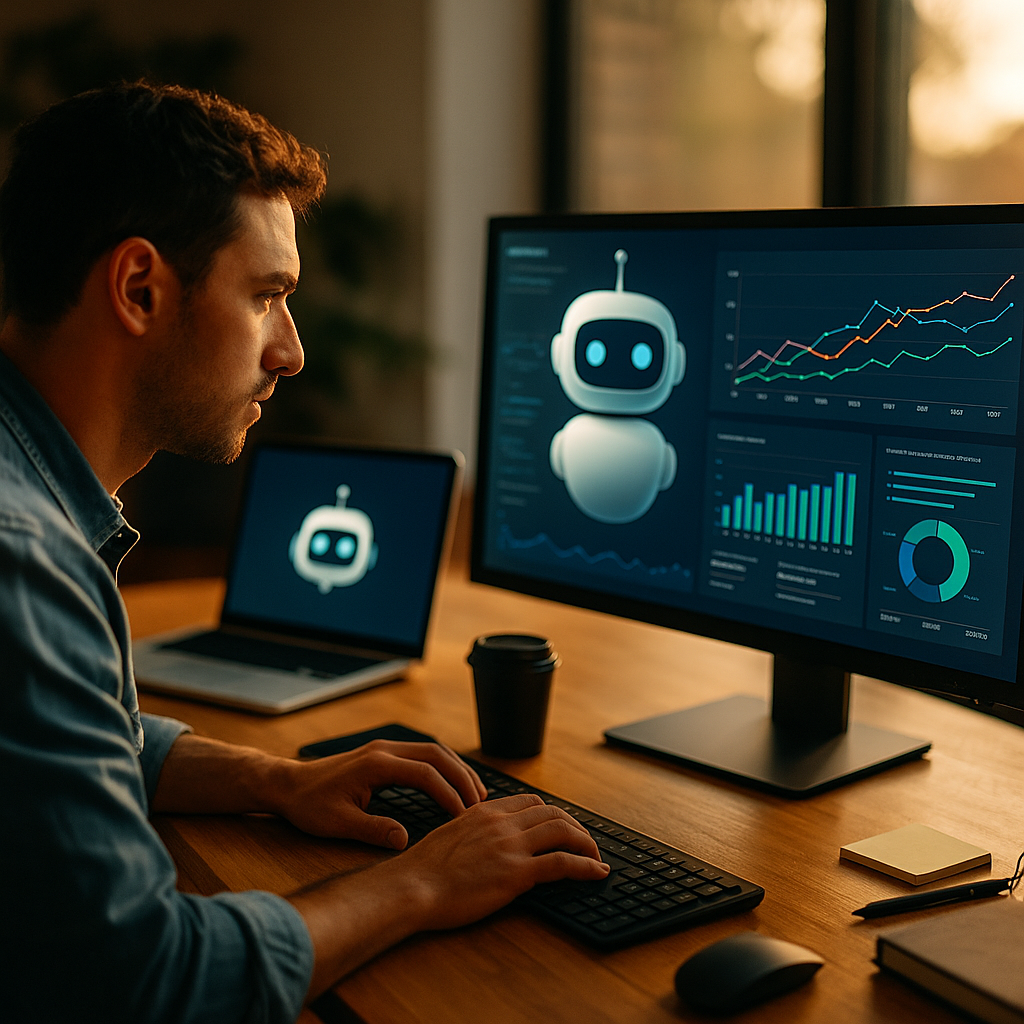Using AI to analyze and optimize your customer service chatbot performance can revolutionize customer engagement in 2025. As bots become business-critical, data-driven insights are needed to deliver fast, accurate, human-like resolutions. In this guide, explore key AI-driven methods to measure and improve chatbot effectiveness—and learn why optimization is a non-negotiable in today’s digital landscape.
Evaluating Modern Chatbots: Key Performance Metrics
Customer service chatbot analytics begin with understanding the right metrics. Effective chatbots, powered by AI, are assessed using several critical benchmarks. Accurate tracking provides transparency and a roadmap for optimization:
- First Response Time (FRT): Measures how quickly the chatbot acknowledges new interactions. Instant replies, ideally under 10 seconds, improve user experience.
- Resolution Rate: Tracks the percentage of inquiries resolved autonomously by the chatbot versus those requiring agent handoff.
- User Satisfaction Score: Many businesses use post-interaction surveys or emotive feedback (like thumbs up/down) to gauge perceived quality.
- Containment Rate: Indicates how many conversations begin and end with the bot, minimizing escalation to human agents.
- Average Handling Time (AHT): Shorter conversations generally mean a smoother bot experience, though nuance may be needed for complex cases.
Modern analytics tools automatically generate these metrics, enabling managers to see real-time trends and identify emerging issues before they impact CX.
AI Techniques for Chatbot Performance Analysis
To move beyond surface-level statistics, advanced AI applications provide deep insights into language processing, intent recognition, and user sentiment. Key techniques include:
- Natural Language Processing (NLP) Review: AI analyzes thousands of transcripts, identifying patterns in misunderstood queries, drop-offs, and frequently asked questions.
- Sentiment Analysis: AI tools can decipher context and emotion in text, isolating areas where the chatbot may cause frustration or delight.
- Intent Mapping: Machine learning algorithms study user inputs, revealing gaps in the chatbot’s training data or intent library.
- Conversational Flow Analysis: Sequence mining uncovers points where users exit or loop, signaling improvement opportunities in decision trees.
By leveraging these techniques, teams can diagnose root causes for performance dips and importantly, detect trending issues before they scale.
Optimizing Chatbot Workflows Using AI Recommendations
Once chatbots have been analyzed, AI is indispensable in suggesting—and automating—bot improvements. This includes:
- Predictive Suggestions: Systems now propose new FAQs, intent expansions, or alternate responses based on recurring unresolved cases.
- Reinforcement Learning: Bots automatically learn effective patterns by weighting responses that lead to successful outcomes higher in future interactions.
- Personalization Models: AI-driven chatbots adapt their dialogue style or offer personalized greetings and solutions based on user history or channel behaviors.
- Continuous Testing: Through A/B testing or multi-armed bandit algorithms, AI tests multiple conversational flows, promoting those with higher engagement or speed of resolution.
Top-performing organizations use these recommendations not as set-and-forget, but as a feedback loop, continually training and tweaking for excellence.
Ensuring Data Privacy and Security in AI Chatbot Analysis
EEAT guidelines prioritize data privacy, making security a critical part of AI chatbot analytics. In 2025, compliance includes:
- Data Anonymization: All user chat logs processed by AI should be stripped of personally identifiable information (PII) as per the latest regulatory requirements.
- Logging and Transparency: Businesses are expected to log all AI-driven interventions and make available records for audits, minimizing bias and misuse.
- Consent-based Analysis: Only analyze user conversations when explicit permission is provided, and clearly communicate data usage in simple language.
- Secure Cloud Integration: Leading chatbot analytics platforms adopt encrypted storage and transfer protocols, limiting access via strict authentication policies.
Embedding these standards not only shields users but also builds brand trust, enhancing the reputation of customer service functions.
Scaling Insights: Integrating AI Chatbot Analytics with Business Intelligence
AI-based chatbot analytics reach their full potential when integrated into the broader business intelligence ecosystem. This creates a closed feedback loop:
- Cross-Channel Reporting: Visualize chatbot effectiveness alongside phone, email, and social channel metrics for a holistic customer view.
- Root Cause Analysis: Connect bot drop-offs or escalation spikes with product, supply chain, or marketing data to fix issues at the source.
- Strategic Recommendations: AI not only improves conversational flows but can surface broader business trends—such as a spike in queries about a new feature, indicating marketing needs.
- Automated Escalation Rules: Set dynamic workflows that route urgent, high-value, or sensitive issues to the ideal human expert based on AI urgency assessment.
This unified approach ensures that customer feedback, gathered at the bot level, translates directly into measurable improvements across the business.
Conclusion: The Future of Chatbot Optimization is AI-Driven
Continuous AI-powered chatbot analysis and optimization keep customer service responsive and competitive. Using advanced analytics, businesses in 2025 turn chatbots into intelligent, adaptive partners—improving satisfaction, efficiency, and business insights. To thrive in this landscape, prioritize ongoing measurement, security, and integration with core business strategies.
FAQs
-
How often should chatbot performance be analyzed?
For optimal results, review chatbot analytics weekly for top-level trends, and conduct in-depth analysis monthly or after major updates. Real-time AI alerts can flag urgent issues instantly.
-
Can AI chatbots really improve over time?
Yes. AI-powered chatbots learn from each interaction, refining their understanding, expanding response libraries, and adjusting conversational flows automatically through reinforcement learning.
-
How do I measure the ROI of chatbot optimization?
Measure containment rates, cost savings, Net Promoter Score (NPS) lifts, customer satisfaction, and reduced human agent workload. Compare these to pre-AI performance benchmarks for a quantifiable ROI.
-
Is customer data safe when using AI analytics?
Reputable AI chatbot platforms use anonymization, encryption, and transparent audit trails to protect user data—aligning with global privacy regulations in 2025.
-
What’s the biggest improvement seen with AI chatbot optimization?
Most organizations report marked increases in resolution rates and user satisfaction, plus uncover valuable product and support trends that drive business decisions.
